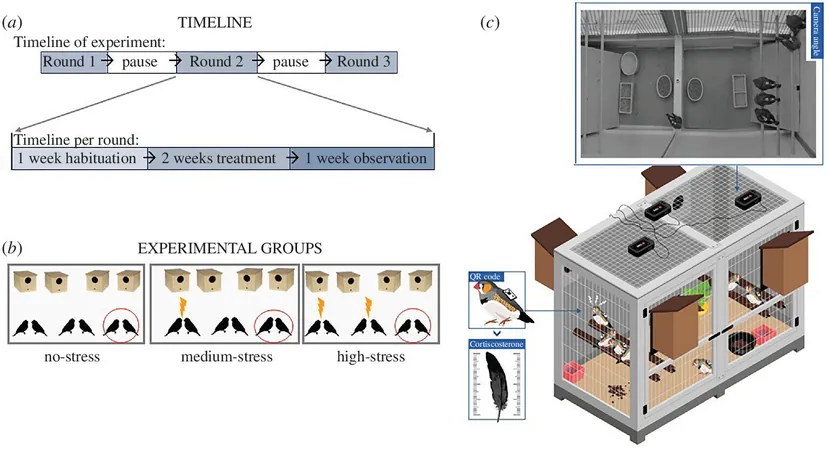
Groundbreaking Genetic Research Unlocks Secrets to Testicular Cancer Treatment
2024-11-13
Author: Wei
Recent advancements in genetic research
Recent advancements in genetic research have revealed critical insights into the development of testicular cancer, a disease that, while accounting for just 1% of all male cancers, is the most prevalent among younger men aged 15 to 44. With nearly 200 new diagnoses each year in Ireland alone, understanding the genetic underpinnings of this cancer is more crucial than ever, especially as incidence rates continue to rise across Northern and Central Europe.
Survival Rates and Treatment Challenges
Despite its high treatability, with survival rates surpassing 90% when detected early, patients with high-risk testicular cancer face grim realities; they have only about a 50% chance of survival even after rigorous clinical treatments. This dire prognosis underscores the urgent need for more effective treatment strategies that can minimize toxicities and side effects associated with current chemotherapy options.
Innovative Research Using Whole Genome Sequencing
A team of scientists, utilizing innovative technology from the 100,000 Genomes Project, have taken a significant step forward. By applying whole genome sequencing to 60 testicular cancer samples, they uncovered new gene mutations and evolutionary patterns that hold the keys to understanding this complex disease.
Key Findings from the Research
Key findings from their research, recently published in *Nature Communications*, include:
- The identification of new potential cancer drivers, including those related to specific subtypes of testicular cancer, which could lead to better patient stratification by tumor characteristics.
- Reconstruction of evolutionary development pathways of genetic alterations in testicular germ cell tumors (TGCTs), providing clearer insight into the progression of the disease.
- Discovery of a wider range of mutational signatures associated with TGCTs, reflecting various carcinogenic exposures such as smoking and UV light, thereby facilitating a retrospective examination of cancer risks linked to specific behaviors.
- Detection of previously unknown recurrent mutational hotspots that could play a significant role in tumor formation.
- Identification of a unique genomic immune mechanism predominantly found in seminomas, the most common subtype of testicular cancer.
Significance of the Research
Máire Ní Leathlobhair, the study's lead author and Assistant Professor at Trinity's School of Genetics and Microbiology, emphasized the importance of this research in improving patient outcomes: "We've made a substantial leap in comprehending the mechanisms of this disease and in uncovering potential treatment strategies. This study exemplifies how large-scale genomic analysis can provide insights that other methods might overlook."
Moreover, Ní Leathlobhair acknowledged the vital contributions of the participants from the 100,000 Genomes Project and the collaborative efforts of NHS medical professionals in facilitating this research. By transforming genomic discoveries into practical treatments, this research could pave the way for more effective strategies in combating testicular cancer, ultimately saving lives and improving the quality of care for patients.
Future of Testicular Cancer Treatment
With this significant progress, the scientific community remains hopeful about finding more precise, personalized therapies that can revolutionize outcomes for those battling testicular cancer. Keep an eye on this space; the fight against cancer just got a whole lot smarter!


 Brasil (PT)
Brasil (PT)
 Canada (EN)
Canada (EN)
 Chile (ES)
Chile (ES)
 España (ES)
España (ES)
 France (FR)
France (FR)
 Hong Kong (EN)
Hong Kong (EN)
 Italia (IT)
Italia (IT)
 日本 (JA)
日本 (JA)
 Magyarország (HU)
Magyarország (HU)
 Norge (NO)
Norge (NO)
 Polska (PL)
Polska (PL)
 Schweiz (DE)
Schweiz (DE)
 Singapore (EN)
Singapore (EN)
 Sverige (SV)
Sverige (SV)
 Suomi (FI)
Suomi (FI)
 Türkiye (TR)
Türkiye (TR)